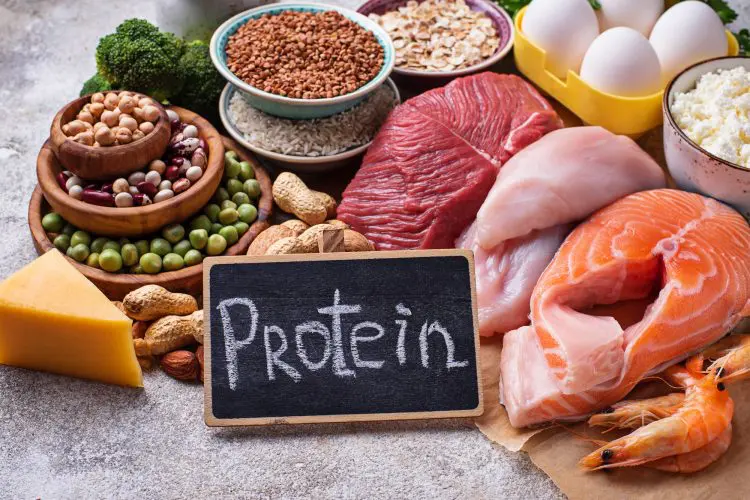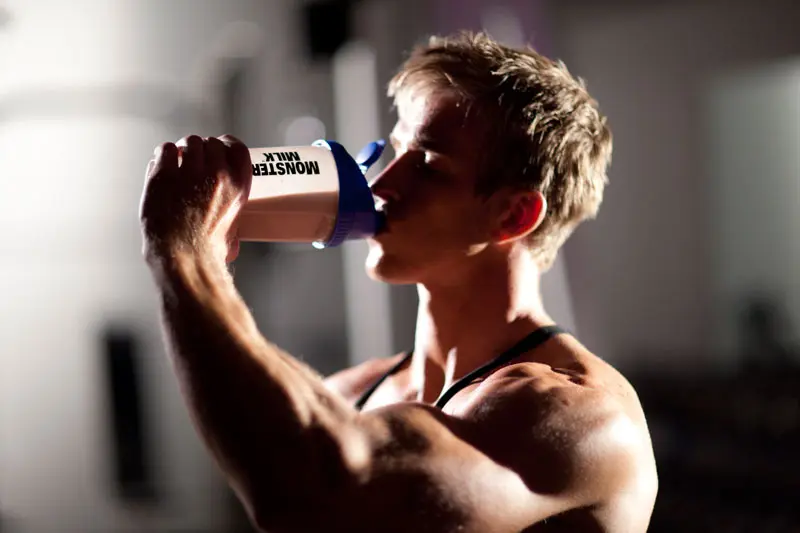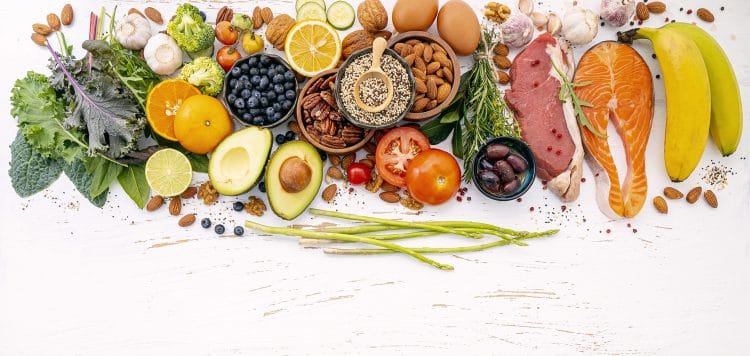Bodybuilders are often depicted as muscle-bound dimwits with big biceps but tiny brains. While this is a popular misconception, it’s also a long way from the truth. Building muscle and getting stronger requires a solid understanding of anatomy, nutrition, and exercise science.
Most bodybuilders are very familiar with hormones, macro and micronutrients, and a host of other science-y subjects that the average person does not understand.
That said, some of the things that bodybuilders do and believe are based on something called bro-science. This is the science of gyms. Bro-science is often true but may not have been ratified by whitecoat-wearing researchers yet. It’s the stuff we do that works, even though we don’t always know why.
However, other aspects of bro-science HAVE been studied, and some have been shown to be incorrect. Examples include doing high reps to spot reduce fat from your abdomen and that squats and deadlifts engage your abs as much as crunches and planks, which they don’t (1).
Another bro-science “fact” that’s seemingly set in stone is the existence of the so-called anabolic window.
According to bro-lore, if you don’t consume a fast-acting protein and carb shake within 30 minutes of your workout, your muscles won’t recover and grow as fast as they could.
Level Up Your Fitness: Join our 💪 strong community in Fitness Volt Newsletter. Get daily inspiration, expert-backed workouts, nutrition tips, the latest in strength sports, and the support you need to reach your goals. Subscribe for free!
In this article, we examine this piece of bro-science and reveal whether it holds up to scrutiny.
Anabolic Window 101
On paper, at least, the anabolic window makes a lot of sense. In fact, the anabolic window is such a convincing idea that it’s still taught on many nutrition and personal training courses (2).
This is how it works…
Intense strength training takes a lot out of your body. When you lift weights, you cause micro trauma to your muscles, literally breaking them down at a microscopic level. You also deplete your glycogen stores, which are your body’s main energy source during intense exercise. Glycogen is stored glucose.
The extent of this muscle breakdown and glycogen depletion depends on the length and duration of your workout.
According to the anabolic window, consuming a fast-acting protein and carbohydrate immediately after training is essential for kickstarting the recovery process. The idea is that consuming protein provides your muscles with the amino acids they need for repair.
At the same time, the fast-acting carbs replenish depleted glycogen and cause a big increase in insulin. Insulin helps drive the amino acids and glucose into your muscles so they can get to work sooner. This is facilitated by an increase in post-exercise insulin sensitivity.
The idea is that the anabolic window remains open for 30 minutes and gradually starts to narrow after that. That’s why chugging down a protein and carb recovery shake immediately after exercise is deemed to be so important.
All of this makes a lot of sense, which is why the anabolic window is such a common and popular concept. There are even commercially made post-workout shakes for this very purpose.
However, studies suggest that the post-training anabolic window is a lot longer than we previously believed (3). It seems that NOT consuming protein and carbs mere moments after your last set WILL NOT undermine your progress.
Related: Best Pre-Workout Supplements
What the Science Says
While the concept of the anabolic window is based on scientific facts, those facts have been somewhat misinterpreted. Intense workouts DO cause glycogen depletion and muscle breakdown. Still, your window for ingesting nutrients to boost muscle growth and recovery is considerably bigger than 30 minutes.
So, forget about the anabolic window, and imagine an anabolic double-wide garage door instead!
Post-training Protein

According to studies, while intense strength training does cause muscle breakdown, providing you’ve been eating enough protein, that breakdown is minimal. You should have more than enough amino acids circulating around your body to get the recovery process started. Also, even fast-acting whey protein digests relatively slowly, and very little will reach your muscles within the magic 30-minute timeframe.
For muscle growth, it’s more important to make sure you eat enough protein throughout your day. Providing you are meeting your protein needs, it really doesn’t matter when you consume protein. However, failing to get enough protein could limit muscle building, so make sure you’re eating enough.
Related: Protein Calculator – Find your Daily Protein Intake
Post-training Carbohydrates

Intense training DOES deplete your glycogen stores. Glycogen provides energy for the muscles in which it is stored. In other words, the glycogen in your pecs is used by your pecs, and the glycogen in your quads is for your quads.
Your body cannot release glycogen from one muscle group to be used by another. The only exception to this is liver glycogen, which is released into your blood to keep your brain supplied with glucose.
Contrary to what a lot of people think, while strength training does deplete your glycogen, that depletion is pretty minimal. It’ll take more than a few sets of barbell curls to empty your biceps’ glycogen stores.
In fact, it can take several hours of sustained exercise to fully empty your glycogen stores. That’s why some runners “hit the wall” at around the 20-mile mark of a marathon. It takes THAT long to deplete their leg glycogen.
Level Up Your Fitness: Join our 💪 strong community in Fitness Volt Newsletter. Get daily inspiration, expert-backed workouts, nutrition tips, the latest in strength sports, and the support you need to reach your goals. Subscribe for free!
So, if your workout doesn’t use your glycogen stores as much as we previously thought, there is no rush to restock them. It’s also worth remembering that you won’t be training that depleted muscle for at least a couple of days, and maybe not for a week. Eating carbs will gradually restock your glycogen stores, and not consuming glucose immediately after exercise will not affect your rate of recovery.
In studies, exercisers consumed glucose at varying intervals after training, and the end result was the same – glycogen replenishment (4). It seems that timing is not as important as we previously thought.
Related: Carb Cycling Calculator
What Really Matters
With the concept of the anabolic window smashed, it’s important to remember that nutrition is still a crucial part of the bodybuilding equation. After all, you are what you eat!
To build muscle, you need:
A Calorie Surplus
Training, recovering, and building muscle all require energy, and we measure that energy in calories. To gain muscle, you need a calorie surplus, which means providing your body with more energy than it needs. It’s very tough (but not impossible) to build muscle without a calorie surplus. Remember the bodybuilding adage; you’ve got to eat big to get big.
Related: Weight Gain Calculator – The Bulking Calculator
Adequate Protein, Carbohydrate, and Fat
Collectively known as the macros, you need the right mix of fuels to maximize your progress. In simple terms, you need enough protein for muscle repair and growth, adequate carbs for energy, and enough fat for things like anabolic hormone synthesis.
Tracking and adjusting your macros based on your training goals should lead to faster progress, be that gaining muscle or burning fat.
Related: Try Macronutrient Calculator and TDEE Calculator
A Healthy Diet
While counting calories and macros is important, micronutrients like vitamins and minerals are critical, too. Micronutrients are like metabolic sparkplugs that ensure the reactions in your body happen in a timely manner. From your immune system to muscle contractions to skin and bone health, micronutrients are critical. While a little processed food is okay, most of your food should be natural and healthy.
The Right Supplements
While no supplement is essential, there are some that could help you make faster progress. Providing you are eating enough calories, getting all the macros you need, and your diet is mostly healthy, a few well-chosen bulking supplements could help you gain muscle faster.
Should You Still Drink A Post-Workout Shake?

So, it seems that the anabolic window doesn’t exist, and there is no need to consume fast-acting protein and carbs immediately after exercise (5). So long as you consume adequate protein and carbs throughout your day, drinking a recovery shake (or not) within 30-minutes of the end of your workout will not affect recovery or muscle growth.
It could be argued that pre-workout nutrition is more important than post, as those are the nutrients your body will use to start the recovery process.
Does that mean you can stop taking your mixer cup to the gym and chugging down your recovery shake? Not so fast…
While the anabolic window doesn’t really exist, your post-workout shake can still be helpful. After all, whatever is in your shake will contribute to your daily intake of calories, protein, and carbs. It’s a source of rehydrating fluids, too. You could also add a dose of creatine, which has been shown to enhance recovery and muscle growth (6).
Wrapping Up
The anabolic window is nothing more than bro-science. There is no critical 30-minute period after training where you MUST consume protein and carbs to maximize recovery and muscle growth.
In fact, you’ve probably got several hours to refuel your muscles. That means you can just enjoy a leisurely meal when you get home from the gym instead of a hastily gulped shake while standing in the changing room!
That said, your post-workout shake is still beneficial, even if it won’t magically enhance muscle growth. It contributes to your daily energy and macronutrient intake.
All of this means that it doesn’t matter if you miss the 30-minute anabolic window. Doing so won’t undermine your progress. That said, if you want to consume a fast-acting post-training carb and protein shake, it won’t do you any harm, either.
References:
1 – PubMed: An Electromyographical Comparison of Trunk Muscle Activity During Isometric Trunk and Dynamic Strengthening Exercises https://pubmed.ncbi.nlm.nih.gov/21157393/
2 – PubMed: International Society of Sports Nutrition Position Stand: Nutrient Timing https://pubmed.ncbi.nlm.nih.gov/28919842/
3 – PubMed: Nutrient Timing: A Garage Door of Opportunity? https://pubmed.ncbi.nlm.nih.gov/32629950/
4 – PubMed: Post Exercise Nutrient Intake Timing in Humans Is Critical to Recovery of Leg Glucose and Protein Homeostasis https://pubmed.ncbi.nlm.nih.gov/11350780/
5 – PubMed: Nutrient Timing Revisited: Is There A Post-Exercise Anabolic Window? https://pubmed.ncbi.nlm.nih.gov/23360586/
6 – Journal of the International Society of Sports Nutrition: Creatine Supplementation Enhances Muscle Force Recovery After Eccentrically-Induced Muscle Damage in Healthy Individuals https://jissn.biomedcentral.com/articles/10.1186/1550-2783-6-13










